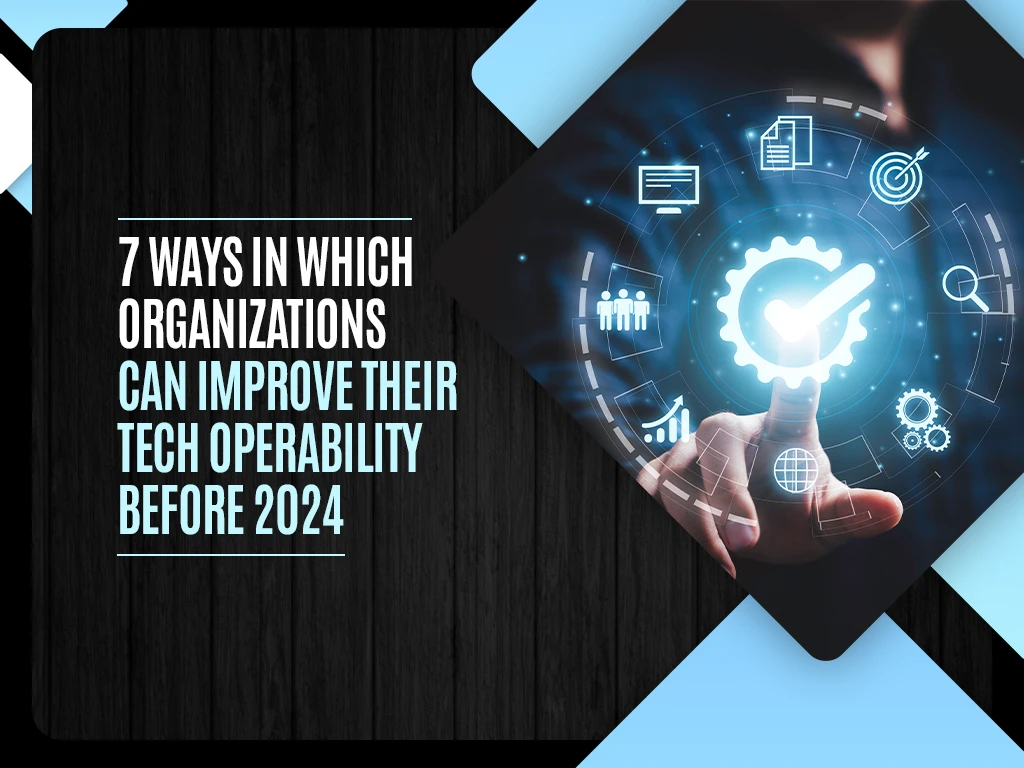7 ways in which organizations can improve their tech operability before 2024

The operability of technology within organizations has become more crucial than ever. As we step into 2024, it’s imperative for businesses to stay abreast of technological advancements to remain competitive and efficient. This article delves into seven key strategies that organizations can adopt to enhance their tech operability in the coming year.
From leveraging cutting-edge cloud computing to harnessing the power of AI and virtual meeting platforms, these tactics are designed to streamline operations, boost productivity, and foster innovation. Let’s explore how these strategies can be a game-changer in the world of corporate technology.
Deeper Integration of Cloud Computing
Cloud computing has revolutionized the way organizations handle storage and data management, offering a plethora of benefits that extend far beyond mere data housing. By embracing cloud solutions, businesses can enjoy unparalleled accessibility, allowing team members to access information and collaborate seamlessly, irrespective of their physical location. This flexibility is crucial in today’s increasingly remote and global workforce.
Furthermore, cloud computing provides scalable storage solutions, ensuring that as a business grows, its data storage capabilities can grow with it, without the need for significant hardware investments. Enhanced collaboration, improved data recovery options, and cost-effective scalability make cloud computing an indispensable tool for any forward-thinking organization.
Investing in Cybersecurity
In the digital age, robust cybersecurity is not just an option but a necessity for organizations. As cyber threats become more sophisticated, investing in advanced security measures is crucial to protect sensitive data and maintain customer trust. Implementing strong security protocols, such as multi-factor authentication and end-to-end encryption, is essential.
Regular security audits and updates can also help in identifying vulnerabilities and fortifying the organization’s digital defenses. By prioritizing cybersecurity, businesses not only safeguard their assets but also reinforce their reputation as secure and reliable entities in the digital marketplace.
Leveraging AI and Automation
Incorporating Artificial Intelligence (AI) and automation into daily operations presents a multitude of advantages for modern organizations. These technologies streamline processes, reduce manual labor, and enhance overall efficiency. AI algorithms can analyze large data sets quickly and accurately, providing insights that aid in more informed decision-making.
Automation of routine tasks frees up valuable time for employees, allowing them to focus on more strategic activities that require human expertise. From customer service chatbots to predictive analytics, AI and automation are transforming the way businesses operate, leading to increased productivity and innovation.
Enhancing Communication with Virtual Meeting Platforms
In today’s increasingly remote work environment, virtual meeting platforms have become indispensable for maintaining effective communication within organizations. These platforms enable teams to collaborate seamlessly from various locations, breaking down geographical barriers and fostering a more connected workforce. By facilitating real-time discussions, file sharing, and project management, virtual meetings ensure continuity in operations and decision-making processes.
Additionally, they significantly reduce operational costs associated with physical meetings, such as travel expenses.
Fostering a Tech-Savvy Workforce
For organizations to thrive in the digital era, fostering a tech-savvy workforce is essential. Continuous training and development in emerging technologies empower employees with the skills and knowledge needed to navigate the evolving tech landscape effectively. It’s crucial for organizations to cultivate a culture that values technological proficiency and encourages ongoing learning.
By providing access to training resources, workshops, and seminars, employees can stay updated with the latest trends and tools, enhancing their productivity and innovation. A workforce that is well-versed in technology not only drives the organization’s growth but also adapts more readily to new technological advancements.
Regularly Updating IT Infrastructure
Keeping IT infrastructure up-to-date is vital for any organization looking to stay competitive and secure in the digital landscape. Regular updates and maintenance ensure that systems are running efficiently and are safeguarded against the latest cyber threats. Up-to-date IT infrastructure supports new technologies and applications, which are essential for business growth and operational efficiency.
Moreover, regular maintenance minimizes the risk of system downtimes and technical glitches, which can impact productivity and customer service. In essence, investing in the latest IT infrastructure and keeping it well-maintained is fundamental for the smooth and secure running of any modern organization.
Adopting Customer-Centric Tech Tools
In today’s digital era, enhancing customer experience is key to business success. Adopting customer-centric tech tools can significantly improve the quality of interactions between businesses and their customers. Technologies like Customer Relationship Management (CRM) systems help in managing customer data efficiently, enabling personalized communication and better service delivery.
Chatbots and AI-driven support tools can provide instant assistance to customer inquiries, improving response times and satisfaction. Moreover, personalized services, facilitated by data analytics and machine learning, can tailor experiences to individual customer preferences, boosting engagement and loyalty.
Recap
As we forge ahead into 2024, the landscape of organizational technology is rapidly evolving, and staying ahead requires a proactive approach. Implementing these measures will not only prepare organizations for the future but also ensure they remain agile, secure, and competitive in an increasingly digital world. Embracing these technological advancements is no longer just an option but a necessity for success and growth in the modern business environment.

